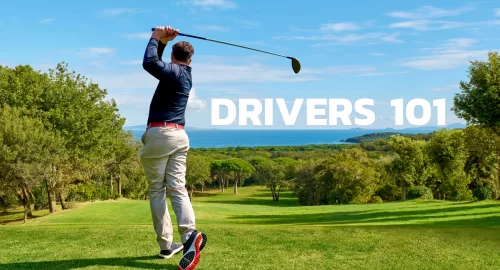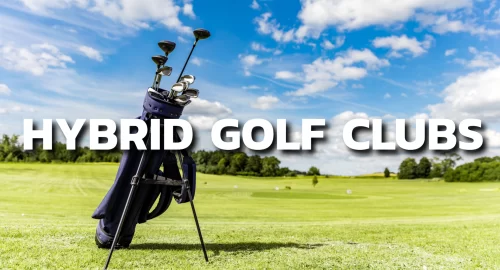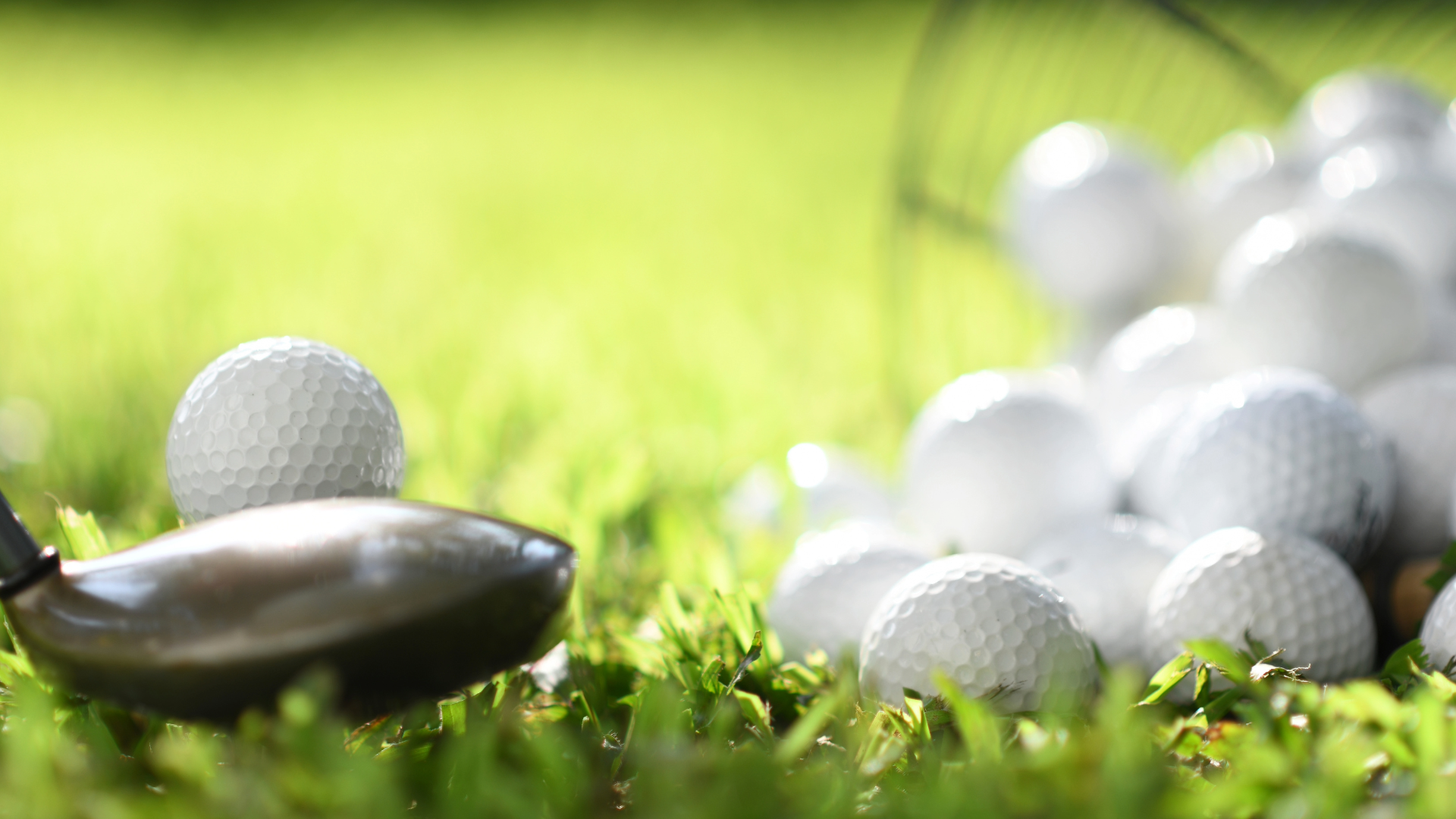
Are you playing with the right golf ball that matches your swing speed?
Using the right equipment – both clubs and balls – is vital to playing your best golf.
Playing with clubs that are too heavy, stiff, and don’t have the right lie angles makes consistent contact nearly impossible. Additionally, if you use a golf ball that doesn’t match your swing speed, it’ll hurt your distance and accuracy.
Today we’re focusing on the best golf balls for every situation to help you understand the different types of balls and which ones are right for your unique swing.
History of the Golf Ball
The history of golf balls is actually quite interesting, and one that not enough golfers appreciate. Did you know that golf balls were once made of wood, and later leather stuffed with feathers or cow’s hair?
That’s right, the original balls from the 17th century were hard wooden, round balls, and used for several centuries. Feather balls – which were leather pouches stuffed with chicken or goose feathers – replaced them but were wildly expensive (2-5 shillings, which is between $10 to $20 by today’s standards).
Golf is golf. You hit the ball, you go find it. Then you hit it again. – Lon Hinkle
The guttie ball was the next iteration, which used dried sap from the Malaysian sapodilla tree. This led to the wound golf ball in the late 1800s and eventually the addition of dimples in the early 1900s.
Golf balls are now made with a few different materials (typically Surlyn or urethane) since they’re much more durable. The Rules of Golf now require a ball to not exceed 1.620 punches, but must not be smaller than 1.680 inches. Rules also state a ball must be spherical and have a symmetrical arrangement of dimples, but there is no limit to how many dimples are on a golf ball.
Essentially, the evolution of golf balls has made golf much easier, even though it’s still one of the most challenging sports.
Types of Golf Balls
Now that you have a better understanding of the history of golf balls, let’s get into the different types. As mentioned before, it’s essential to play with a golf ball that matches your swing speed and skill level. Otherwise, you’ll lose out on distance, accuracy, and your chance of a higher score.
Distance Golf Balls – The Best Golf Ball for Beginners and Seniors
The first type of balls we’ll talk about today are known as distance golf balls and are great for beginners or senior golfers. Since these golfers don’t have as fast a swing speed as an average or advanced golfer, they need balls that prioritize distance above all else.
For example, TaylorMade makes a Distance+ golf ball for this particular golfer. It’s a lower-priced ball (about $20/dozen) and designed to improve speed on all shots thanks to the low drag core construction. Other similar examples for distance golf balls are the Titleist Tour Speed and Pinnacle Rush.
Distance golf balls have lower compression ratings (the TaylorMade example above has 77) which helps improve ball speed. This is why these types of balls are great for beginners and senior players who don’t generate as much natural swing speed. More speed equals more distance, which leads to longer drives and shorter approach shots.
Distance golf balls are also cheaper than others below, which is great because beginners tend to lose more balls. If you’re losing a sleeve (or more) per round, it’s best to play lower-priced balls until you become more consistent.
Mid-Handicap Golf Balls for Average Golfers
Once you progress to a mid-handicapper, you’ll likely need to switch from distance golf balls. Instead, it’s better to play golf balls that offer a good mix of distance and spin to improve short-game shots.
Just like you advance with clubs, you need to adapt with balls as your swing speed increases.
A good example of this is the Titleist AVX. It has longer distance capabilities than some balls but plenty of greenside spin and control.
Premium Golf Balls for Experts
More advanced golfers are more likely to want to upgrade to top-grade materials for ultimate performance. Premium golf balls offer a good mix of distance and short game feel but do come with a higher price tag. These balls have a higher compression rating (nearly 100) and require faster swing speeds to get the most out of them.
Some of the most popular premium golf balls include the Titleist Pro V1, TaylorMade TP5, and Callaway Chrome Soft. These balls are much more expensive than standard balls ($50 or more dozen) but can help with distance, ball flight, and accuracy.
If you’re a single-digit golfer, have an above-average swing speed, and consider yourself a golf junkie, chances are you’re ready to invest in the best golf balls out there.
Our Picks for the Best Golf Balls
Now that we’ve covered different aspects of golf balls, let’s get into some of our top picks.
Titleist Pro V1 or Pro V1X
When it comes to premium golf balls, it’s hard to beat Titleist. Their Pro V1 series has been one of the most popular golf balls in the game for nearly two decades. Each year, Titleist refines them to make them even more high-performing and easy to see why their slogan is “The number one ball in golf.”
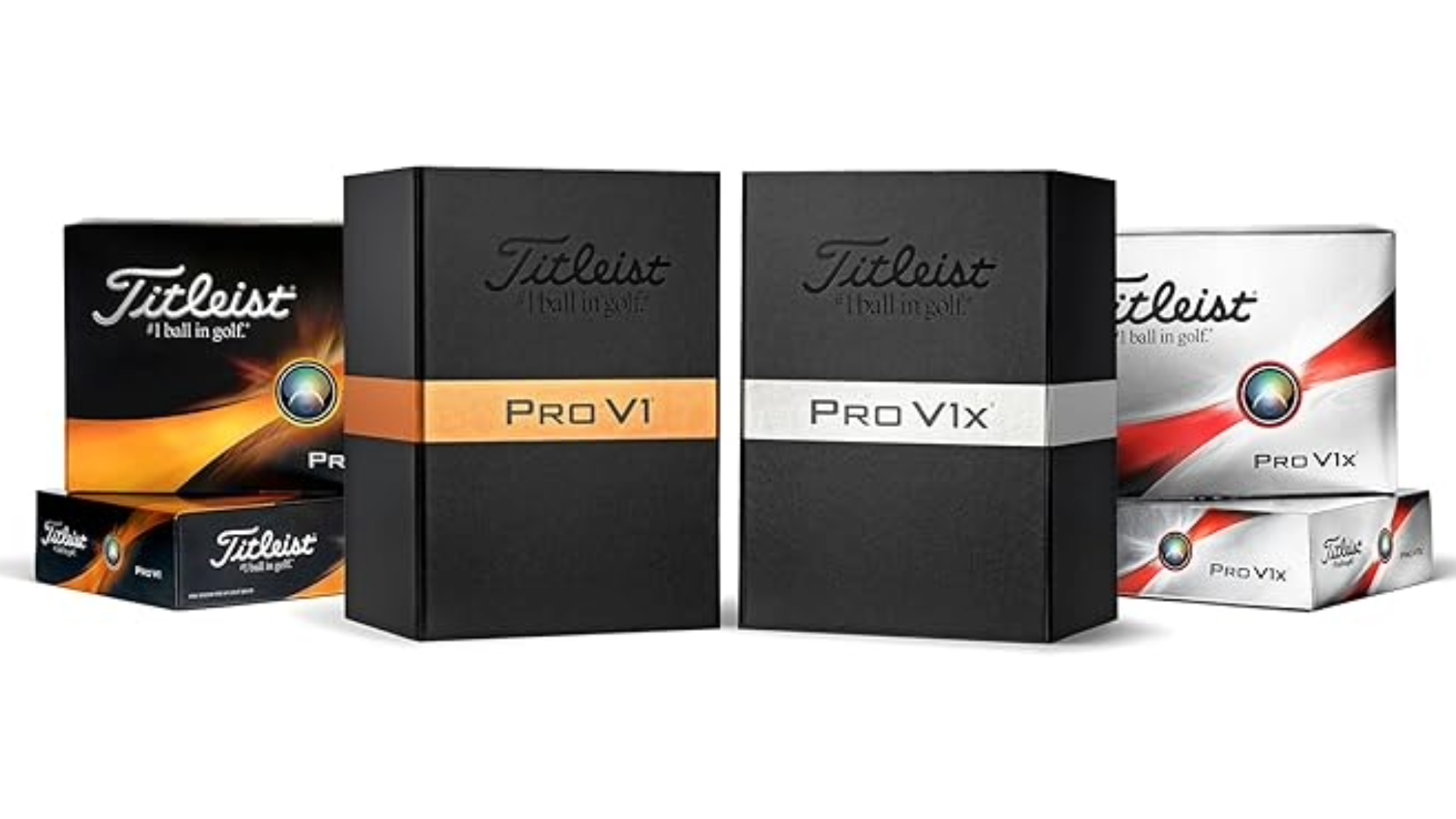
Image courtesy: Amazon
The Pro V1 has different models to suit different types of players, including the:
- Titleist Pro V1
- Titleist Pro V1X
- Titleist Pro V1 Left Dash
If your game isn’t quite there yet, the Titleist AVX is also a great alternative to the Pro V1.
The Srixon Q-Star
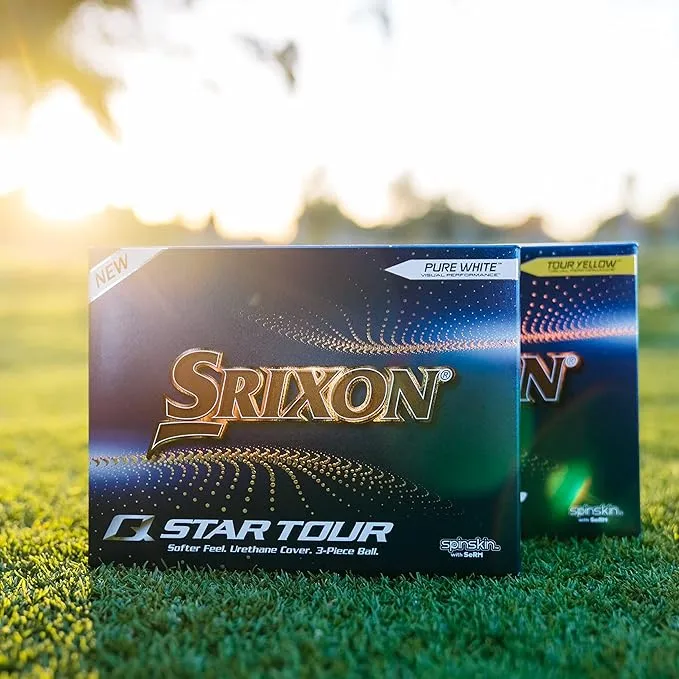
Image courtesy: Amazon
Srixon is another great golf brand that offers tons of balls for all types of golfers. We think the Srixon Q-Star is a great choice for amateur golfers who want a lower-compression ball.
These balls won’t break the bank and have a great mix of distance, feel, and greenside control. They’re also available in several colors and have a great built-in alignment aid to help line your putts up properly.
Bridgestone Tour B RX
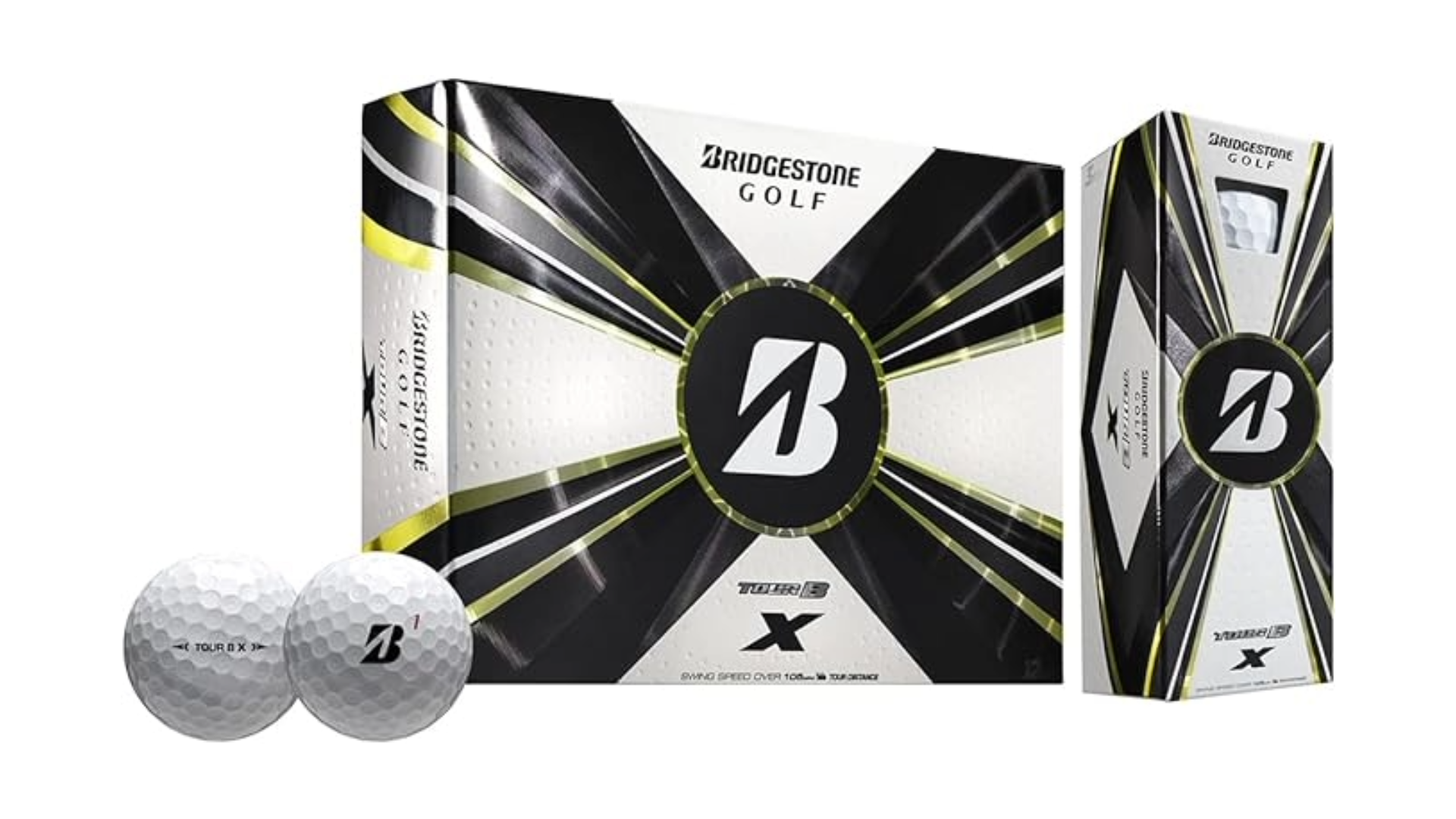
Image courtesy: Amazon
Bridgestone has a huge selection of golf balls for both pros and amateurs alike. Tiger himself even has his own golf ball in the Bridgestone Tour B XS TW edition.
Most mid-handicap golfers will benefit from the Bridgestone Tour B RX. These golf balls provide more distance on tee shots thanks to the explosive velocity features. But they have plenty of control on approach shots.
If your swing speed is under 105 mph (the average male golfer is about 95 mph) this is a great option.
Callaway Chrome Soft
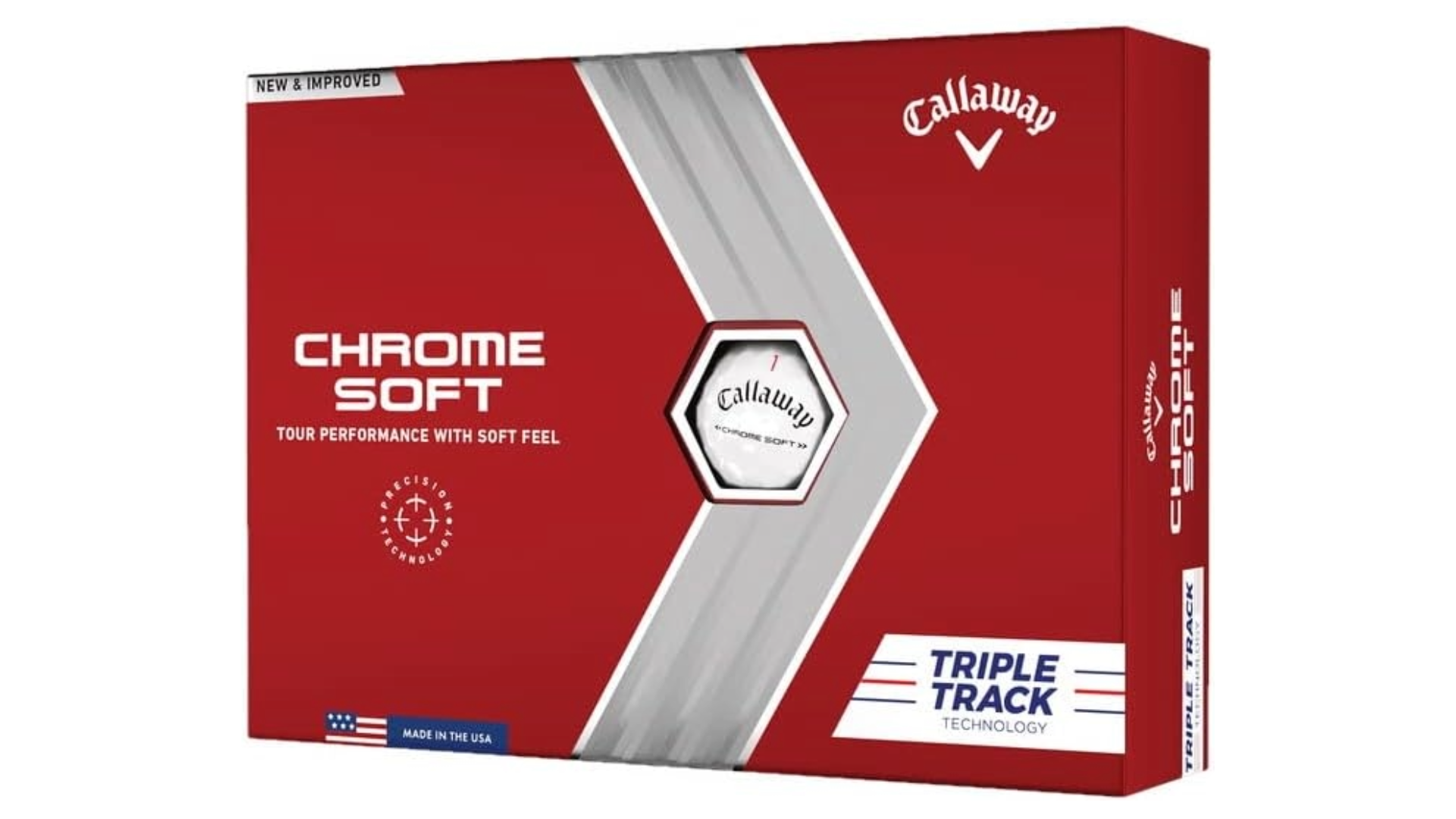
Image courtesy: Amazon
Callaway makes a huge selection of clubs, golf balls, and gear. The Chrome Soft line has multiple variations including the Chrome Soft, Chrome Soft X, and Chrome Soft X LS.
As Callaway described them on their website, “Chrome Soft is better for everyone, from amateurs to major winners. Now with our proprietary new Precision Technology, the Chrome Soft Golf Ball is longer through the bag while providing the signature soft feel that golfers love.”
The Chrome Soft has outstanding feel, excellent distance, and tons of greenside control. This model provides a consistent ball flight and the highest launch for a driver, making them a great choice for most golfers.
If you want more spin and lower flight, check out the Chrome Soft X LS instead.
Vice Pro Soft
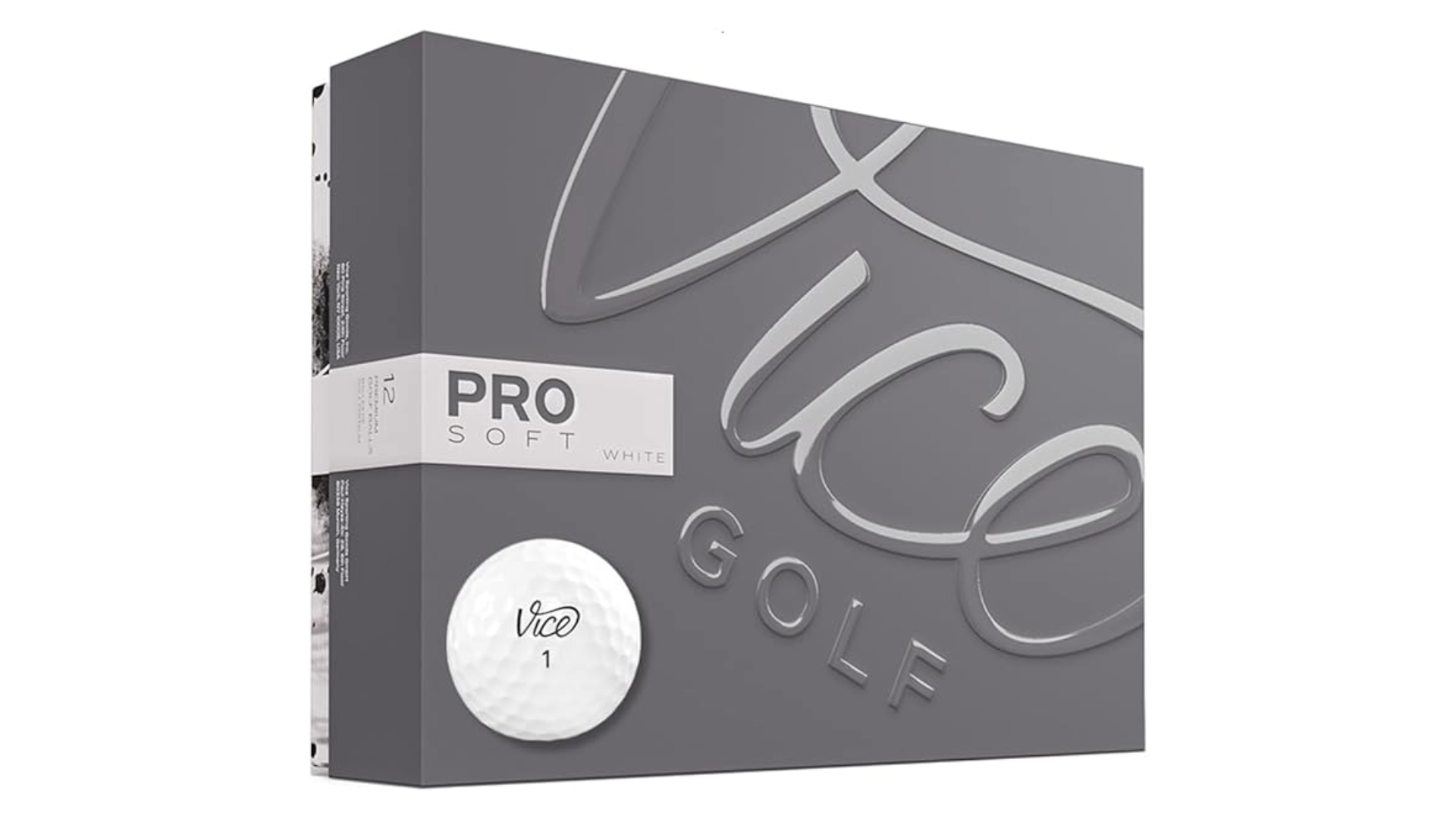
Image courtesy: Amazon
If you’re on a budget, it’s hard to beat Vice golf balls. They make premium balls without a premium price tag, as they’re available online only.
They have five balls in their product lineup, and the Vice Pro Soft is a great option for everyday golfers with medium or slower swing speeds. If you want a lower compression ball at a discount rate, this one is tough to beat.
To Up Your Golf Game, Try the Launch Deck
Once you find the right golf ball for your game, it’s important to work on your swing in practice.
To help you hit it more consistently, we suggest trying the Launch Deck.
This training aid was created by Hank Haney and will help with two of the biggest issues most golfers face – the slice and poor distance. As you know, if you can hit it straighter and longer, it’ll have a significant impact on your game.
The Launch Deck is a versatile and portable training aid that can provide instant feedback on path and attack angle. If you want to improve your tee box game by transitioning from an inside to outside swing, this is the training aid for you. It’ll provide instant feedback and help you hit up on the ball to add distance and make practice up to 10 times more effective.
Plus, it’s so small that you can take it with you to the driving range or golf simulator with ease. You don’t have to use any apps or try to understand a confusing user manual. Simply tee up a driver and start hitting to get feedback to start changing your swing.
Closing Thoughts
While it may seem like a small decision, we hope we’ve illustrated the importance of using the right golf balls and how much it can impact your golf experience.
If you still aren’t sure which type of golf ball is right for you, there are a variety of free online golf ball fitting services available. Also, when you’re getting fit for new clubs, ask the fitter you’re working with what are some of the best choices based on your swing speed.
If you need help with other issues – such as creating lag, improving your wedges, or improving in the offseason, check out the Performance Golf Training Library. Inside there are DIY online training programs from top coaches like Martin Chuck, Brian Mogg, Eric Cogorno, and more to help you improve your golf swing.
Pretty soon, you’ll be swinging like Tiger Woods in 2000.
